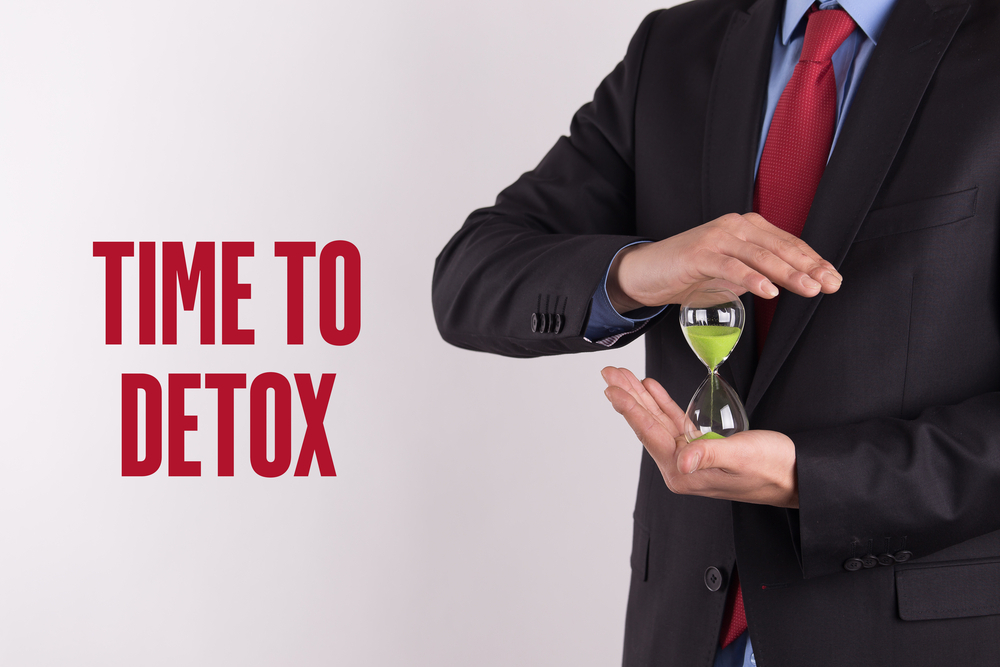
Written by:

Medically Reviewed by:
Last Updated:
February 25th, 2025
Home Detox | Benefits and Risks
When Ewan McGregor’s character in the film Trainspotting, Mark Renton, locks himself in a room to detox from heroin, viewers are confronted with a graphic and unsettling portrayal of withdrawal symptoms. As the character endures a nightmarish drug detox process, we are left to question the accuracy of this portrayal and the implications it has for those seeking detox treatment. The decision to detox from drugs or alcohol is always a positive one but is home detox safe and effective?
What is home detox?
Detox is an essential step in the recovery process, as it helps rid the body of harmful substances, breaks physical dependence and allows you to begin healing. It also helps to give you the foundations needed, so you can undergo rehab treatment to address the psychological and emotional aspects of your reliance on these substances. Home detox is where you stop taking drugs or alcohol to try and clear them from your body without the aid of medical professionals. Also known as going “cold turkey”, home detox is rarely advisable as there are many potential complications.
Why do people choose to detox at home?
There are various reasons people choose to detox at home. For some, it is a matter of convenience, as they may not have easy access to a professional detox facility. Others may be concerned about the cost of professional treatment and whether they can afford private detox. Some people may also feel embarrassed or ashamed about their addiction and prefer to detox in the privacy of their own homes. It’s important to remember that Recovery Lighthouse is here to help you and find a subtitle solution for you, no matter your concern.
Is home drug or alcohol detox safe?
In most cases, the simple answer to this question is no. Unfortunately, there are many risks associated with attempting to detox at home, including:
Dangerous drug and alcohol withdrawal symptoms
Withdrawal symptoms can range from mild discomfort to life-threatening complications, depending on the substance and the severity of your condition. For example, alcohol withdrawal can lead to seizures, delirium tremens, and even death in severe cases. Detoxing at home leaves you vulnerable to these dangerous symptoms.
No professional medical support
During the detox process, medical professionals can monitor and manage withdrawal symptoms and ensure your safety and comfort. At home, this level of care is not available, potentially leading to harmful outcomes.
Nobody monitoring nutrition or hydration
Proper nutrition and hydration are essential during detox as the body needs to replenish and repair itself. Without professional guidance, you may neglect these critical aspects of their recovery, further compromising your health.
A higher risk of relapse
Detoxing at home, away from the structure and support of a detox facility, can also increase the likelihood of relapse. This is especially true when cravings and withdrawal symptoms become overwhelming.
The increased danger of overdose
After a period of abstinence, your tolerance for drugs or alcohol starts to decrease. If you then relapse, this can lead to a dangerous overdose, as your body is no longer able to handle the same amount of substances as before.
Which substances have the most dangerous withdrawal symptoms?
While all substances can have potentially dangerous withdrawal symptoms, some of the most severe include:
Alcohol
Alcohol detox at home can put you in serious danger of potentially lethal complications, and severe cases can result in seizures, hallucinations and a life-threatening condition called delirium tremens (DTs), so it is crucial to seek professional help.
Benzodiazepines
At home drug detox from benzodiazepines can be extremely dangerous and withdrawal can cause severe anxiety, panic attacks, seizures and even hallucinations. In some cases, withdrawal symptoms can last for weeks or months, making it essential for you to undergo detox at a professional detox centre.
Opioids
Symptoms of opioid withdrawal may include muscle aches, fever, sweating, diarrhoea, vomiting, and intense cravings for the drug (all of which are seen in the Trainspotting heroin home detox portrayal). While these symptoms are generally not life-threatening, they can be extremely uncomfortable and lead to dangerous complications if not managed properly. This is why professional detox is crucial to ensure your safety and minimise the risk of relapse.
Can you ever detox from alcohol at home?
For some people without a reliance on alcohol or underlying health conditions, it is possible to undergo alcohol detox at home with certain precautions. Examples include participating in Dry January or Sober October, which encourages people to abstain from alcohol for a month to improve their health and well-being. Notably, these are usually people who are not already problem drinkers or suffering from alcohol use disorders.
If this applies to you and you decide to undergo home alcohol detox, consider the following safety tips:
- Gradually reduce your alcohol intake: Abruptly stopping alcohol consumption can be dangerous. Instead, reduce your alcohol intake over several days or weeks to minimise withdrawal symptoms.
- Stay hydrated: Drinking plenty of water and other non-alcoholic fluids can help flush toxins from your body and prevent dehydration.
- Maintain a balanced diet: Eating a nutritious diet with plenty of fruits, vegetables and lean proteins can help support your body during detox.
- Get plenty of rest: Sleep is crucial for recovery, so ensure you’re getting enough rest during the detox process.
- Reach out for support: Even if you’re detoxing at home, it’s essential to have support from friends, family or support groups to help you stay accountable and motivated.
- What to do if home detox goes wrong
If you or someone you know experiences severe withdrawal symptoms or signs of an overdose during a home detox attempt, seek immediate medical help. Overdose symptoms can vary depending on the substance but may include:
- Unconsciousness or unresponsiveness
- Slow, shallow or irregular breathing
- Bluish lips or fingernails
- Cold, clammy skin
- Vomiting
- Seizures
When explaining the situation to the medical professionals, explain exactly what substances are being withdrawn from so they can administer the most effective treatment right away.
How to detox safely
The safest and most effective way to detox from drugs or alcohol is through a comprehensive detox treatment programme at a professional facility like Recovery Lighthouse. We provide medically supervised detox and comprehensive treatment programmes to address the physical and psychological causes of your substance use.
Seeking professional help instead of detoxing from home means you’ll receive the care, guidance and resources necessary to withdraw from drugs and alcohol safely and achieve lasting recovery. Contact Recovery Lighthouse today to find out more.


